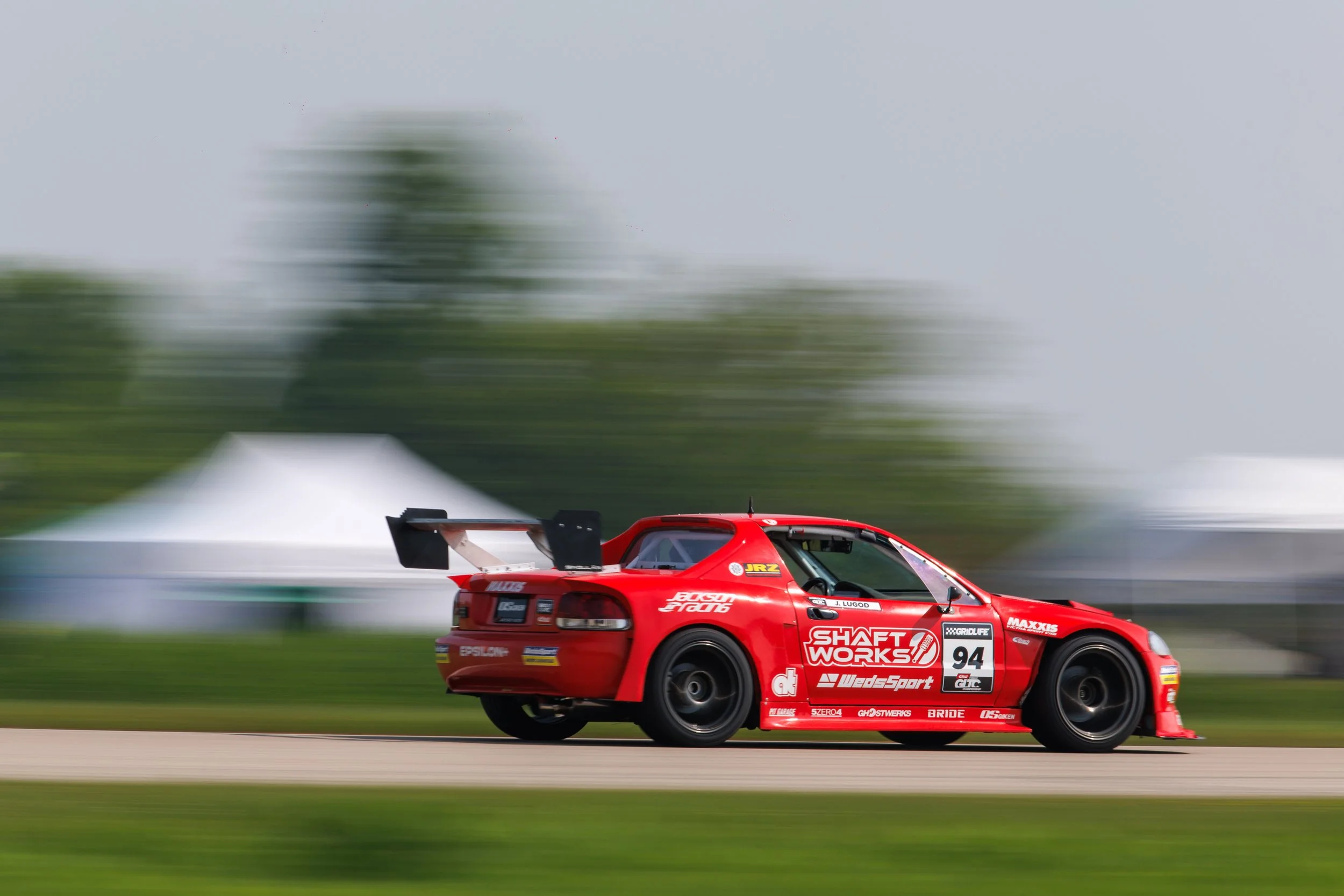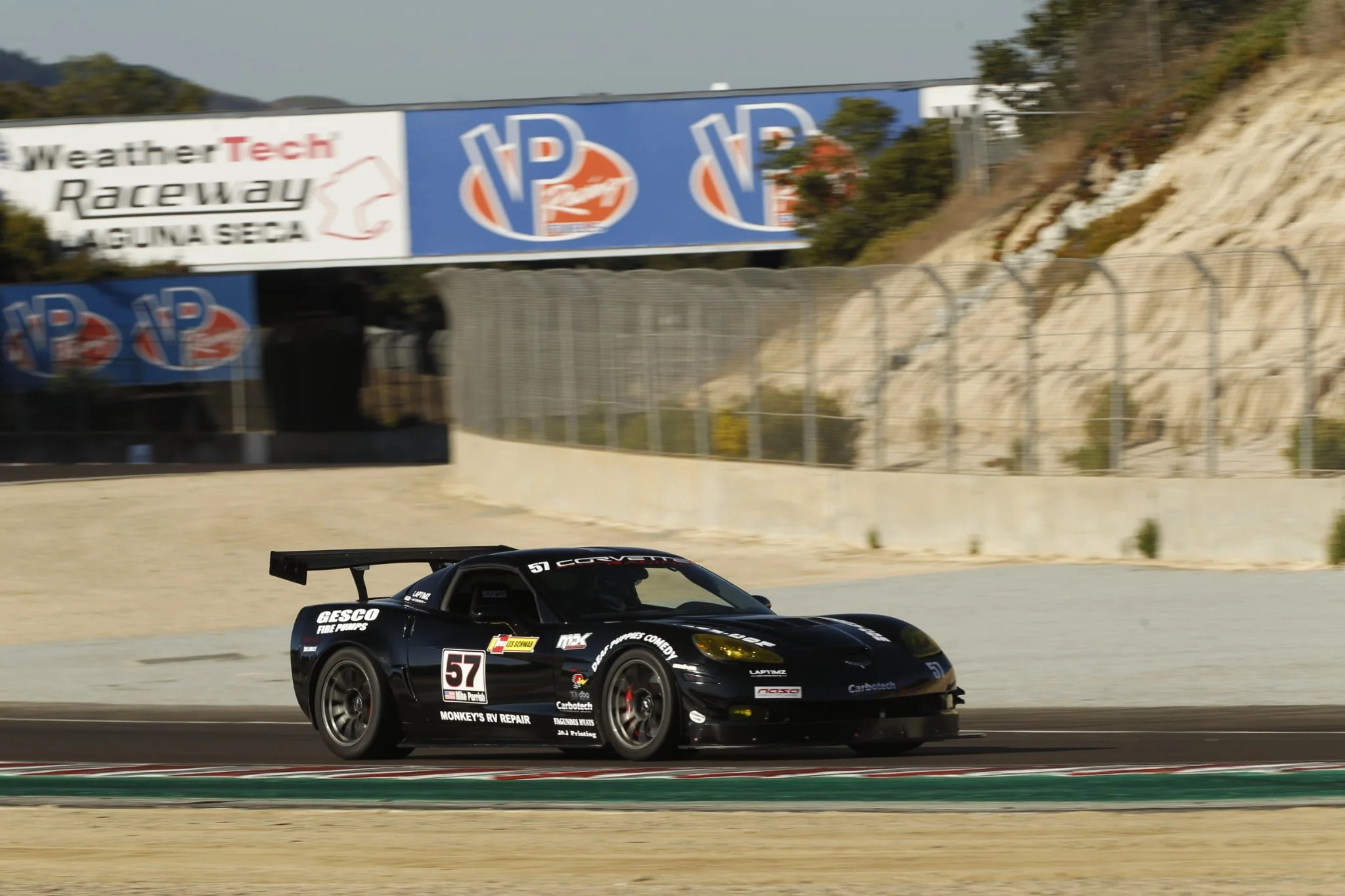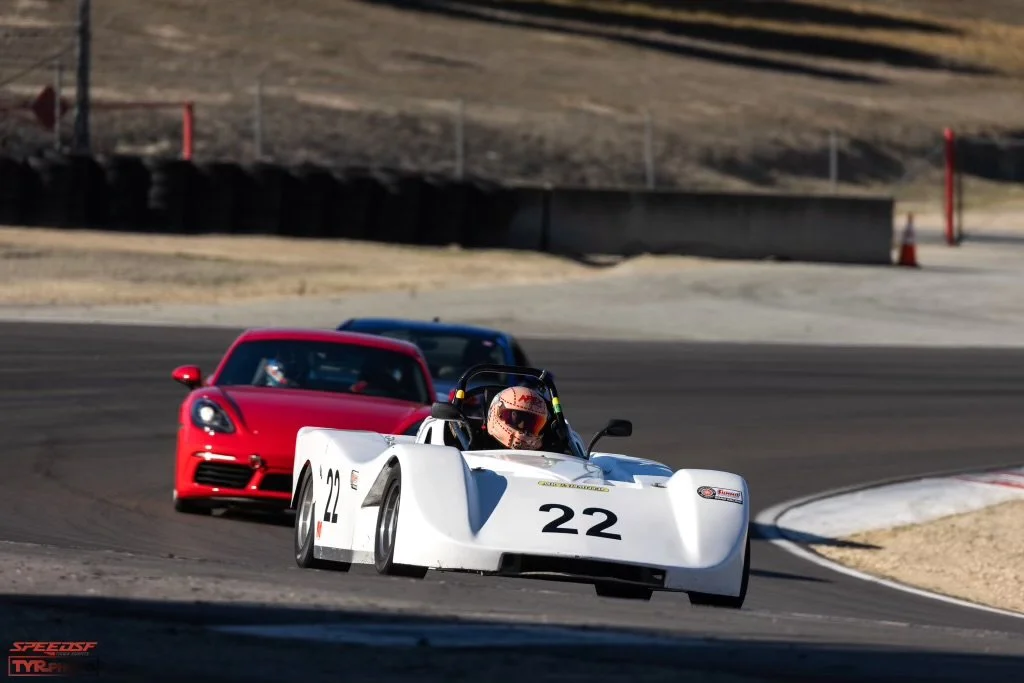
SpeedSF Blog
Every Build Has a Story – Meet the Cars of SpeedSF

Jonathan’s Del Sol: Rotation on Demand
After years of tuning EGs and DC2s for autocross, Jonathan Lugod decided to build a dedicated track car using an uncommon chassis. The Del Sol shares of its parts with the aforementioned Hondas, but once caged, rotates like a CRX.

Mike’s C6: No Hanging the Helmet
After forty years on bikes, Mike and his wife made a compromise. As long as he transitioned into something safer, he'd keep going to the track. With this mildly tuned C6, he’s been able to enjoy a late-life racing renaissance.

George’s Praga R1: Faith Over Fear
George’s collection of track cars runs the gamut, but none of his dozen or so production cars can match the intensity of his recently acquired Praga R1. This 1,500-pound sports racer has challenged him in ways nothing else has.

Maxxis’ VR2: A New Option for PB Hunters
Big news for the PB HUNTERS: Maxxis' new VR2 offers the consistency its predecessor was known for and adds a new level of peak grip that earns it a place among the best track day-summer tires on sale today.

Pauline’s Challenger: Part Car, Part Canvas
Rather than take one of the proven track platforms to learn how to drive at speed, Pauline Yruretagoyena picked the car which pulled at her heart strings the hardest. Now on her second Challenger, she’s learned that the T/A version offers enough performance to keep her busy and more than sufficient style to satisfy her need for self-expression. Few track cars can be considered fashion statements, but her R/T is an exception.

Richard’s MR2 Turbo: Not Too Pretty To Pirouette
Although Richard already had an E92 M3, he decided to spruce up his mid-ship sports car and spin his way into driving competence.

Joe’s AP1 S2000: Continuing Education
A couple years before forty, Joe Drane decided to finally give track days a try. Like with everything he’s pursued, he dove in with two feet and built a stunning S2000 in record time.

Max’s Spec Racer Ford: Lose The Ego
After cutting his teeth in a Porsche, Max got an inkling that going to a lighter, cheaper, more expendable device might expedite his improvement as a driver and budding racer.

Hubert's MKIV Supra: Soft Spot
After failing to find an E30 M3 to begin tracking, Hubert decided he’d get his HPDE start in a fourth-generation Supra Turbo: the slinky grand tourer he fell in love with during his teenage street racing days.
